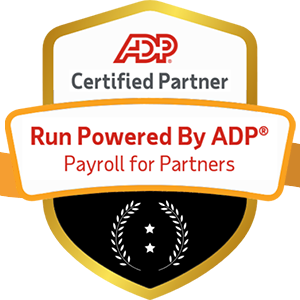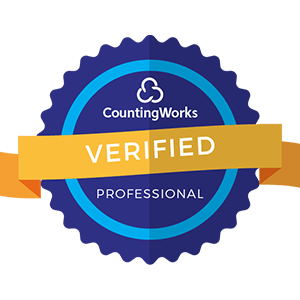
In today's fast-paced, ever-changing business landscape, agility and resilience are no longer friendly. They're essential for survival. Companies that can quickly adapt to new challenges, bounce back from setbacks, and continuously innovate will thrive in the face of disruption.
But building a truly agile and resilient organization is easier said than done. It requires a fundamental shift in mindset and culture, starting with HR.
As the stewards of an organization's people and culture, HR leaders play a critical role in fostering the agility and resilience needed to navigate an increasingly complex world. They can help build a workforce that's not just skilled but adaptable, a culture that's not just high-performing but resilient, and a company that's not just successful but future-proof.
So, how can HR rise to this challenge? Let's dive in.
Before exploring HR's role, let's take a step back and examine why agility and resilience have become such hot topics in recent years.

We live in what's often called a VUCA world—one characterized by volatility, uncertainty, complexity, and ambiguity. Disruptive technologies, shifting consumer expectations, geopolitical instability, and other factors make it increasingly difficult to predict what's next.
In this environment, long-term planning and slow, steady progress are luxuries most organizations can no longer afford. Success hinges on pivoting quickly, learning from failures, and continuously reinventing. As the saying goes, it's not the strongest or the smartest who survive but the most adaptable to change
It's not just that change is constant - it's that the pace of change is accelerating. Futurist Ray Kurzweil has noted that the rate of technological progress is exponential, not linear. Breakthroughs that once took decades now happen in years or even months.
For companies, this means that competitive advantages are increasingly fleeting. What's cutting-edge today may be obsolete tomorrow. Organizations must prototype, test, and scale new ideas rapidly to stay ahead and just as quickly abandon what's not working.
Amid all this turbulence, one thing has remained constant: the critical importance of talent. In a global CEO survey by PwC, 88% of respondents said they were concerned about the availability of essential skills - up from 77% just six years prior.
It's not enough to attract top performers to win the war for talent. Organizations must create an employee experience that engages, develops, and retains their best and brightest. They must build a culture where diverse perspectives thrive, and everyone feels empowered to do their best work.
So agility and resilience are essential - but how are they linked? While often discussed separately, the two concepts are deeply intertwined.
Agility is about speed and flexibility: It's the ability to sense environmental changes quickly, decide how to respond, and execute those decisions smoothly. Agile organizations are built for rapid learning and iteration. They have fluid structures, processes, and mindsets that allow them to pivot gracefully as circumstances shift.
Resilience, on the other hand, is about strength and stability. It's the capacity to withstand shocks, adapt to stressors, and bounce back from adversity. Resilient organizations are built to last. They have deep wells of trust, robust support systems, and a culture of psychological safety that allows them to weather the most brutal storms.
Significantly, agility and resilience are mutually reinforcing. Agility without resilience leads to chaos - a never-ending reactivity that ultimately burns people out. Resilience without agility leads to stagnation - an inability to evolve that eventually makes the organization brittle and vulnerable to disruption.
The most successful organizations strike a balance between the two. They're nimble enough to seize new opportunities as they emerge but grounded enough to stay true to their core values and purpose. They can experiment and fail fast but also have the fortitude to persevere through challenges. In short, they're built for both speed and stability - sprints and marathons.
So, where does HR fit into all of this? As it turns out, just about everywhere. From talent acquisition to leadership development to organizational design, HR touches every aspect of the employee experience - and, therefore, every driver of agility and resilience.
Let's look at some of the critical areas where HR can make a difference:
It starts with getting the right people in the door. When hiring, HR should prioritize candidates who demonstrate critical attributes of agility and resilience, such as:
Of course, assessing these softer skills is often easier said than done. Traditional interviews and resumes only tell part of the story. Many companies use psychometric assessments, job simulations, and behavioral interviewing to assess candidates' potential better.
While hiring the right talent is critical, developing leaders who will inspire and guide them is equally important. HR is essential to building leadership pipelines and equipping managers with the skills they need to navigate a VUCA world.
Some key focus areas for agile and resilient leadership development include:

Agility and resilience aren't just individual competencies - they're also a function of how teams and organizations are structured. HR can play a crucial role in designing more agile and adaptable systems, such as:

Even the most agile structures will only be effective if people feel safe speaking up, experimenting, and taking risks. That's where psychological safety comes in. Harvard professor Amy Edmondson defined psychological safety as "a shared belief held by team members that the team is safe for interpersonal risk-taking."
Research has shown that psychological safety is the most critical factor in team effectiveness - more essential than dependability, structure clarity, meaning, or impact. When people feel psychologically safe, they're more likely to share ideas, ask questions, give feedback, and admit mistakes - all critical behaviors for learning and innovation.
As culture shapers, HR leaders have a unique opportunity to foster psychological safety. Some ways they can do this include:
Building an agile and resilient organization is daunting, but HR leaders can tackle it in stages. Here are a few practical steps to get started:
Fostering agility and resilience is not a one-time event - it's an ongoing learning, experimentation, and growth journey. As HR leaders embark on this path, they face challenges and setbacks. Legacy mindsets, entrenched systems, and the relentless pace of change all conspire to make progress feel slow and challenging at times.
But for those who stay the course, the rewards are immense. Agile and resilient organizations are not only better equipped to navigate disruption - they're also more engaging places to work. Employees who feel empowered to experiment, learn, and bring their whole selves to work will likely stay and thrive.
By leading this charge, HR has an opportunity to drive business results and fundamentally reshape the employee experience. As HR leader and author Josh Bersin puts it, "In this new environment, HR's job is not to prevent or control change, but to facilitate it—to give people the skills and support they need to adapt and thrive in a world of constant learning and reinvention."
That's a tall order - but it's also an exciting invitation. An invitation to co-create the future of work. An invitation to build organizations that are not only successful but truly human. An invitation to leave a lasting legacy of agility and resilience.
The future is full of possibilities for HR leaders who are up for the challenge. By embracing their role as change agents, culture shapers, and people champions, they can write a new story where organizations and individuals alike are primed to learn, grow, and thrive no matter what the future holds


